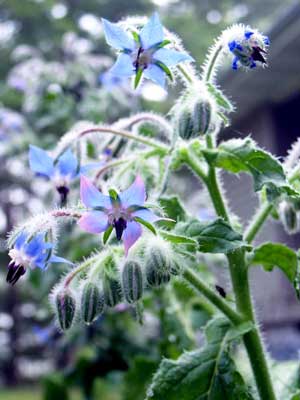Crop Rotation Group
Miscellaneous
|

|
Soil
Any average, well-drained soil.
|
Position
A sunny spot where bumblebees and other large pollinators are desired.
|
Frost tolerant
Seedlings will survive light frosts, but older plants are easily damaged.
|
Feeding
Not generally needed.
|
Companions
A good companion for any crop that needs strong defense from insects. Borage attracts large buzzing insects that dominate their air space.
|
Spacing
Single Plants: 1' 1" (35cm) each way (minimum)
Rows: 11" (30cm) with 1' 11" (60cm) row gap (minimum)
|
Sow and Plant
Plant the large seeds in your garden in late spring. A fresh crop of plants can be planted in late summer for bloom in the fall.
Our Garden Planning Tool can produce a personalized calendar of when to sow, plant and harvest for your area.
|
Notes
Borage seedlings are only edible when very young. Large plants produce edible, starry blue flowers that attract bees in droves. The foliage can be gathered and composted.
|
Harvesting
Cut back borage plants by half their size in midsummer to encourage reblooming. Blossom clusters make beautiful but short-lived cut flowers or edible garnishes.
|
Troubleshooting
Beware of sleepy bees when pruning or otherwise working with mature borage plants.
|